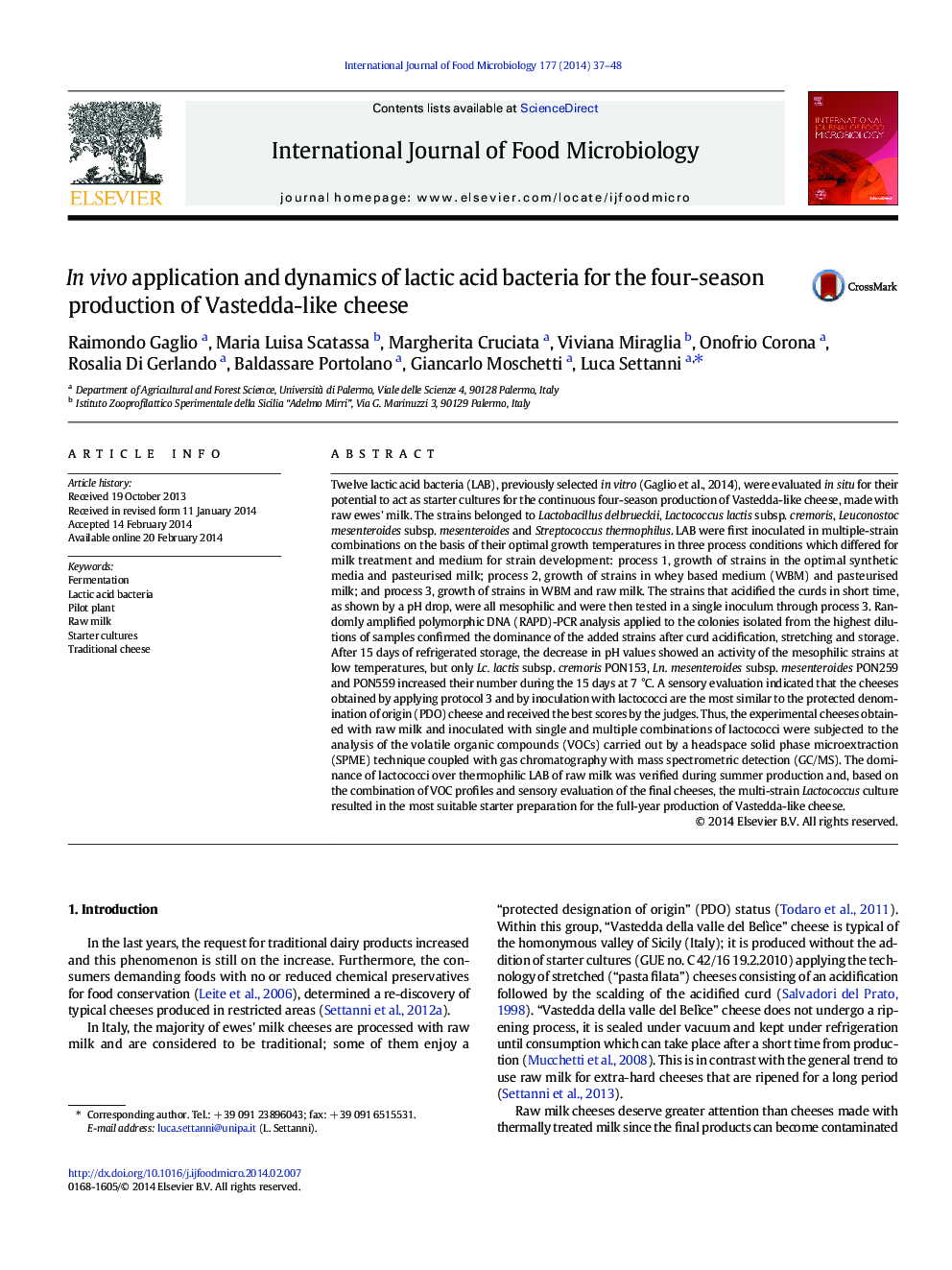| کد مقاله | کد نشریه | سال انتشار | مقاله انگلیسی | نسخه تمام متن |
|---|---|---|---|---|
| 4366969 | 1616605 | 2014 | 12 صفحه PDF | دانلود رایگان |

• Pilot plant cheese making allowed the selection of LAB starters.
• Lactococci and leuconostocs allowed Vastedda-like cheese making in short time.
• Lactococcus lactis strains produced experimental cheeses similar to PDO cheeses.
• The multi-strain of lactococci determined the best Vastedda cheese production.
Twelve lactic acid bacteria (LAB), previously selected in vitro (Gaglio et al., 2014), were evaluated in situ for their potential to act as starter cultures for the continuous four-season production of Vastedda-like cheese, made with raw ewes' milk. The strains belonged to Lactobacillus delbrueckii, Lactococcus lactis subsp. cremoris, Leuconostoc mesenteroides subsp. mesenteroides and Streptococcus thermophilus. LAB were first inoculated in multiple-strain combinations on the basis of their optimal growth temperatures in three process conditions which differed for milk treatment and medium for strain development: process 1, growth of strains in the optimal synthetic media and pasteurised milk; process 2, growth of strains in whey based medium (WBM) and pasteurised milk; and process 3, growth of strains in WBM and raw milk. The strains that acidified the curds in short time, as shown by a pH drop, were all mesophilic and were then tested in a single inoculum through process 3. Randomly amplified polymorphic DNA (RAPD)-PCR analysis applied to the colonies isolated from the highest dilutions of samples confirmed the dominance of the added strains after curd acidification, stretching and storage. After 15 days of refrigerated storage, the decrease in pH values showed an activity of the mesophilic strains at low temperatures, but only Lc. lactis subsp. cremoris PON153, Ln. mesenteroides subsp. mesenteroides PON259 and PON559 increased their number during the 15 days at 7 °C. A sensory evaluation indicated that the cheeses obtained by applying protocol 3 and by inoculation with lactococci are the most similar to the protected denomination of origin (PDO) cheese and received the best scores by the judges. Thus, the experimental cheeses obtained with raw milk and inoculated with single and multiple combinations of lactococci were subjected to the analysis of the volatile organic compounds (VOCs) carried out by a headspace solid phase microextraction (SPME) technique coupled with gas chromatography with mass spectrometric detection (GC/MS). The dominance of lactococci over thermophilic LAB of raw milk was verified during summer production and, based on the combination of VOC profiles and sensory evaluation of the final cheeses, the multi-strain Lactococcus culture resulted in the most suitable starter preparation for the full-year production of Vastedda-like cheese.
Journal: International Journal of Food Microbiology - Volume 177, 2 May 2014, Pages 37–48